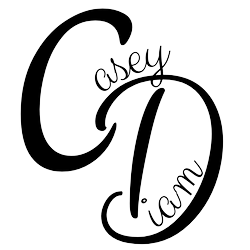Cannabidiol, better known as CBD, is an extract of the cannabis plant that is usually seen in oils, tinctures, and edibles. CBD oil is usually derived from hemp plants, which do contain THC. However, this oil is legal in all 50 states, unlike marijuana, which varies by state law. While marijuana and CBD oil both have beneficial uses, they are not the same thing. CBD is one non-psychoactive component you can find in the cannabis plant. On the other hand, THC is CBD’s counterpart since it is a psychoactive component. While marijuana and CBD oil both have beneficial uses, they are not the same thing, which is important to remember if you ever decide to use one or the other.
After understanding the distinctions among different compounds found in cannabis, it is also crucial to acquire knowledge about reliable online dispensaries that can provide you with the specific products you require. In order to find the most suitable dispensary, you can conduct thorough research on the internet, explore comparison articles (like the one comparing CheapWeed and potcargo), and seek recommendations from your friends. Once you have identified a suitable source to purchase the preferred products, you might also be interested in learning how to utilize them effectively for the improvement of your overall well-being. For further guidance on this matter, you can continue reading the article.
Medicinal Uses of Marijuana
Cannabis, commonly known as marijuana, has garnered increasing recognition for its diverse medicinal properties. The plant contains over a hundred different cannabinoids, with THC (tetrahydrocannabinol) and CBD (cannabidiol) being the most studied. These compounds interact with the endocannabinoid system in the human body, a complex regulatory system involved in maintaining homeostasis. THC is primarily responsible for the plant’s psychoactive effects, while CBD is non-psychoactive and has been associated with various therapeutic benefits. Medicinal cannabis has demonstrated efficacy in alleviating chronic pain, making it a valuable option for patients with conditions like arthritis or neuropathy. Additionally, it has shown promise in reducing nausea and vomiting associated with chemotherapy, as well as stimulating appetite in individuals undergoing treatments for diseases such as HIV/AIDS.
Beyond that, cannabis has exhibited potential in managing symptoms of neurological disorders like epilepsy and multiple sclerosis, and mental health conditions such as anxiety and post-traumatic stress disorder (PTSD). However, it is crucial for individuals to approach cannabis use with caution, considering their specific health needs, potential side effects, and adherence to legal regulations. Consulting a medical professional, like one you can find here, is necessary as they will provide you with the right dosages depending on the symptoms you want to fix.
How to get CBD
With the abundance of CBD products available in the market, it can become perplexing to determine which ones to purchase. Fortunately, there are several methods individuals can employ to streamline their search. One effective approach is to start with a CBD starter kit and build from there. This option is ideal for those who wish to explore a variety of products without committing to a specific one. Additionally, conducting an online search or visiting a local dispensary can provide ample options for CBD products. For instance, a simple search for the best solventless concentrates (check out https://leiffa.com/2022/05/12/best-solventless-concentrates-2022/ if that’s where you’re based) will yield a diverse range of choices to help you decide which one to purchase. You can also peruse similar posts on the internet to gather suggestions on other CBD products.
Extra Background into CBD
Cannabidiol, or CBD oil, is derived from cannabis which you can purchase here, but unlike the THC that provides a high, CBD has little to no psychoactive properties. CBD oil has become increasingly popular in recent years, but before you run out and buy a bottle, it’s important to understand how it differs from other forms of cannabis.
As cannabis legalization sweeps the nation, more consumers are beginning to understand the benefits of cannabidiol. CBD offers a number of therapeutic benefits without the high associated with marijuana. This has led many to explore this growing industry, but some consumers have trouble accessing the products they need. They want to get something that suits their needs specifically, so checking out different ranges and what they can do is something that should be done before buying.
The oil contains a combination of cannabidiol (CBD), CBDa, and THC (tetrahydrocannabinol). CBD is thought to be a naturally occurring component of cannabis, while THC is the psychoactive chemical that causes marijuana users to feel “high.” If people are expecting to get high solely off CBD, they may find themselves disappointed.
CBD is non-psychoactive, meaning it doesn’t give users a high. In fact, most people don’t even realize they’re taking it, according to the National Institutes of Health (NIH).
CBD and THC were first discovered in the 1940s and 1950s, but they remained largely unexplored until recent years. It is controversial, but as time goes on and more information comes out, perceptions can shift.
Today, both compounds can be found naturally in cannabis, hemp, and marijuana.
Well-known Benefits of CBD
As the popularity of CBD grows, more benefits are coming out. It does depend on the individual and their reaction to it, but there are more well-known benefits that people have experienced:
- Plays a role in reducing anxiety and promoting feelings of calm.
- Anecdotal evidence suggests it can also be used in combination with conventional antidepressants as a treatment for depression.
- Relief from chronic and acute pain, anxiety, epilepsy, MS, cancer, and other diseases.
